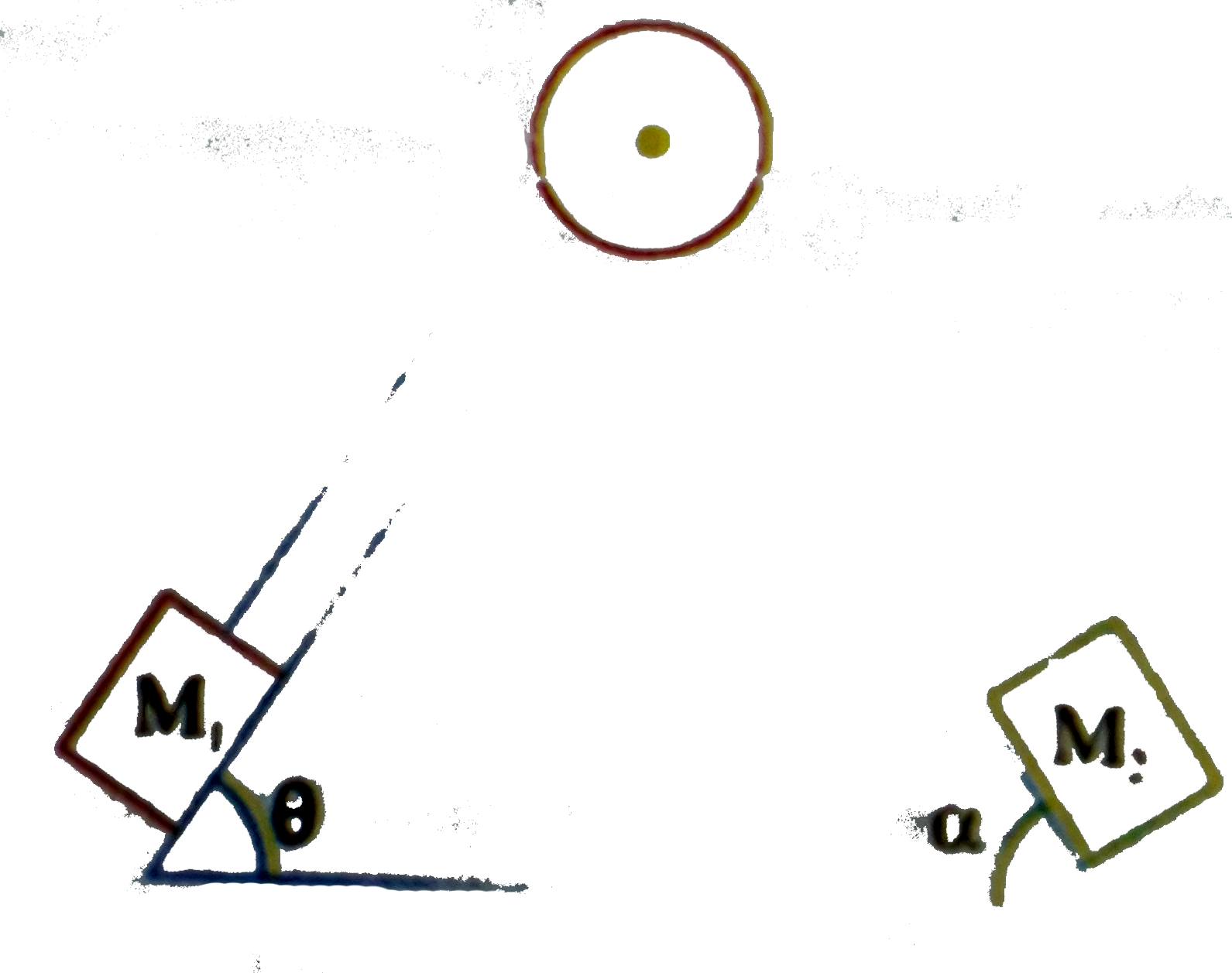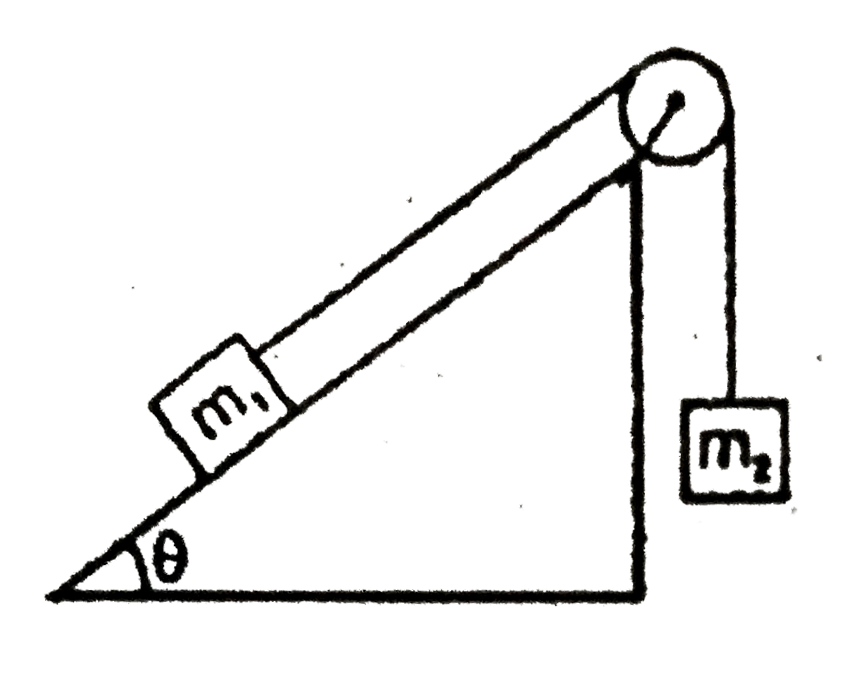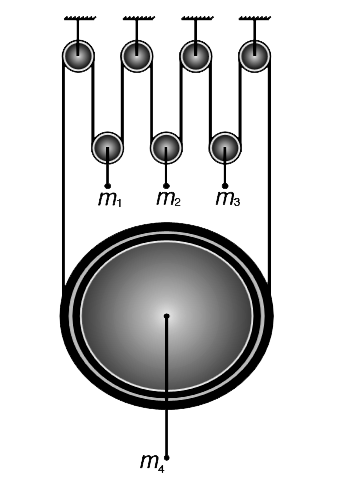Two blocks of mass m1 = 3 kg and m2=1√3 kg are connected by a light inextensible string which passes over a smooth peg. The peg is fixed on the top of the wedge. The planes of the wedge supporting m1 and m2 are inclined at 30∘ and 60∘ respectively with the horizontal. Calculate the acceleration of the masses .Solution in Bengali
The correct Answer is:6.48 N
Step by step video, text & image solution for Two blocks of mass m_(1) = 3 kg and m_(2) = (1)/(sqrt(3)) kg are connected by a light inextensible string which passes over a smooth peg. The peg is fixed on the top of the wedge. The planes of the wedge supporting m_(1) and m_(2) are inclined at 30^(@) and 60^(@) respectively with the horizontal. Calculate the acceleration of the masses . by Physics experts to help you in doubts & scoring excellent marks in Class 11 exams.
Topper's Solved these Questions
- BOOK - CHHAYA PUBLICATIONCHAPTER - FRICTION EXERCISE - Hots Numerical Problems ( Based on Fundamentals of Friction )1videos
FRICTION
- BOOK - CHHAYA PUBLICATIONCHAPTER - FRICTION EXERCISE - Hots Numerical Problems ( Based on Motion on Inclined Surface )15videos
FRICTION
- BOOK - CHHAYA PUBLICATIONCHAPTER - FRICTION EXERCISE - Problem Set -II (Based on Fundamentals of Friction )5videos
FRICTION
- BOOK - CHHAYA PUBLICATIONCHAPTER - FIRST AND SECOND LAW OF THERMODYNAMICSEXERCISE - CBSE SCANNER18videos
FIRST AND SECOND LAW OF THERMODYNAMICS
- BOOK - CHHAYA PUBLICATIONCHAPTER - HYDROSTATICSEXERCISE - CBSE SCANNER1videos
HYDROSTATICS
Similar Questions
A block of mass M is kept on a frictionless horizontal table. A body of mass m is kept on the block. If a force F, Parallel to the table top is applied on the block, the body on the block tends to slide backwards. What is the coefficient of static friction between the block and the body?
View SolutionTime taken by a body to slide down a rough surface inclined at an angle θ , is n time that required by the body to slide down the same distance on a smooth surface inclined at θ also. Find the coefficient of sliding friction between the body and the plane.
06:03View SolutionA tuck moving at 36 km. h−1 has to be brought to rest by applying brakes in such a way that there is no relative displacement of the goods in the truck with respect to the truck floor. Coefficient of friction between the goods and the truck floor is 0.2. Find the minimum distance the truck must move before it comes to rest .
02:16View SolutionWrite the second law of thermodynamics.
01:53View SolutionUsing Pascal's law, explain with a neat figure, the working of a hydraulic lift. Mention any one situation from your daily life where hydrostatic paradox is useful.
03:29View SolutionIn the arrangement shown in fig. a wedge of mass m_(3) =3.45 kg is placed on a smooth horizontal surface. Small and light pulley is connected on its top edge, as shown. A light, flexible thread passes over the pulley. Two block having mass m_(1)=1.3kg and m_(2) =1.5 kg are connected at the ends of the thread. m_(1) is on smooth horizontal surface and m_(2) rests on inclined smooth surface of the wedge. the base length of wedge is 2m and inclination is 37^(@) . m_(2) is initially near the top edge of the wedge. If the whole system is released from rest, calculate: (a) velocity of wedge when m_(2) reaches its bottom. (b) velocity of m_(2) at that instant. (g=10ms^(-2)) .
04:53View SolutionM is a fixed wedge. Masses m_(1) and m_(2) are connected by a light string. The wedge is smooth and the pulley is smooth and fixed m_(1)=10kg and m_(1)=7.5kg . When m_(2) is just released, the distance it will travel in 2 second is.
03:11View SolutionThree blocks of masses m1,m2 and M are arranged as shown in figure. All the surfaces are fricationless and string is inextensible. Pulleys are light. A constant force F is applied on block of mass m1. Pulleys and string are light. Part of the string connecting both pulleys is vertical and part of the strings connecting pulleys with masses m1 and m2 are horizontal.

(P)Accleration of mass m1(1)Fm1(Q)Acceleration of massm2(2)Fm1+m2(R)Acceleration of mass M(3)zero(S)Tension in the string(4)m2Fm1+m206:48View SolutionTwo masses M1 and M2 connected by means of a string which is made to pass over light, smooth pulley are in equilibrium on a fixed smooth wedge as shown in figure. If θ=60∘ and α=30∘ then the ratio of M1 to M2 is
 .01:54View Solution
.01:54View SolutionTwo masses m1 and m2 are attached to the ends of a massless string which passes over a frictionless pulley attached to the top of an inclined plane. The angle of inclination of the plane is θ. Take g=10ms−2

if m1=10kg,m2=5kg,θ=30∘, what is the acceleration of mass m2?04:35View SolutionIn the system shown in fig., all pulleys are mass less and the string is inextensible and light.
(a) After the system is released, find the acceleration of mass m1
(b) If m1=1kg,m2=2kgandm3=3kg then what must be value of mass m4 so that it accelerates downwards?
 View Solution
View SolutionTwo blocks of mass m_(1)"and"m_(2) are connected by light inextensible string passing over a smooth fixed pulleuy of negligible mass. The acceleration of the centre of mass of the system when blocks move under gravity is :
06:26View SolutionTwo blocks of masses m1 = 3 kg and m2=1√3 kg are connected by a light inextensible string which passes over a smooth peg . The blocks rest on the inclined smooth planes of a wedge and the peg is fixed to the top of the wedge . The planes of the wedge supporting m1 and m2 are inclined at 30∘ and 60∘ respectively , with the horizontal. Calculate the acceleration of masses and the tension in the string .
View SolutionTwo masses M_(1) " and " M_(2) are attached to the ends of a string which passes over a pulley attached to the top of an inclined plane. The angle of inclination of the plane is 30^(@) and M_(1)=10 kg, M_(2)=5kg . What is the acceleration of mass M_(2) ?
01:49View SolutionA light string passing over a smooth light pulley connects two blocks of masses m_(1) and m_(2) (vertically).If the acceleration of the system is g/8 then the ratio of masses "m_(1)" to "m_(2)" is "(" take "m_(1)>m_(2)]
11:28View Solution

